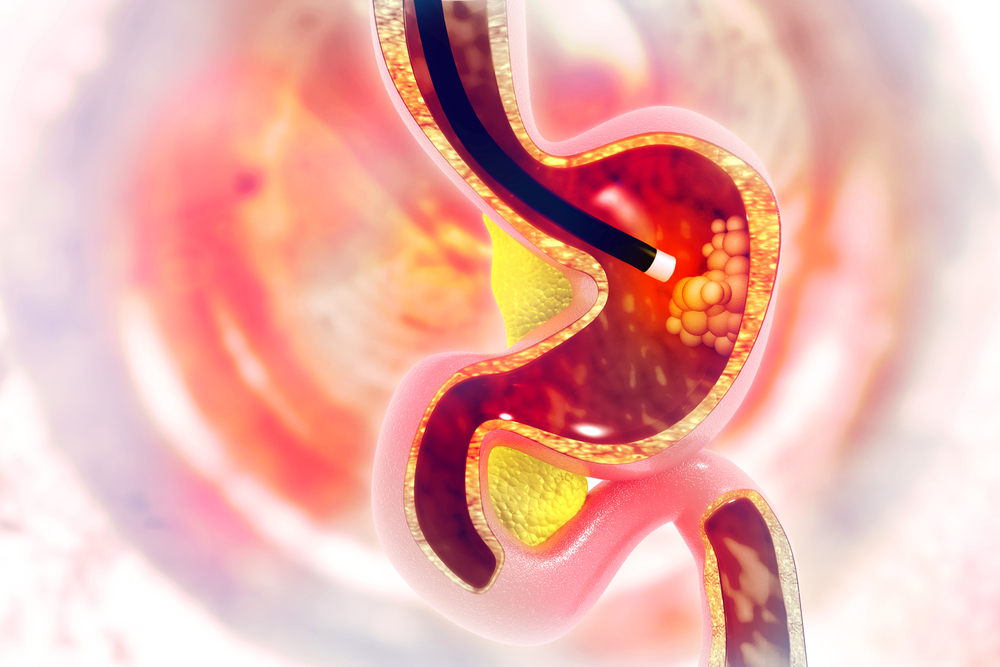Esophagogastroduodenoscopy (EGD) puts a thin tube with a very small camera into the mouth, passing through the esophagus, stomach and duodenum to observe the health status along the way for diagnosis and treatment.
Diagnosis of the following diseases
- Bleeding from the upper gastrointestinal tract (e.g., esophagus, stomach, and duodenum);
- Epigastric pain, abdominal pain or chest pain;
- Frequent vomiting;
- Dysphagia or odynophagia;
- Digestive system malabsorption;
- Iron-deficiency anemia.
Adjuvant operations
- Removal of foreign bodies in the esophagus or stomach (e.g. fish bones, batteries, coins, etc.);
- Hemostasis of the upper digestive tract;
- Dilatation of the upper gastrointestinal tract (e.g. esophageal dilatation);
- Gastrostomy (for placement of feeding catheters);
- Resection of polyps or lesions.

Please cooperate with us on the following matters before EGD
- Please complete the consent form before EGD.
- For morning EGD, fast after 10pm of the previous night; for afternoon EGD, fast after breakfast (at least 8 hours, including water and food), so as not to affect the examination and reduce the risk of vomiting and pneumonia caused by inhalation of vomitus.
- Children with heart disease may need to take orally or be injected with antibiotics before the test to prevent bacterial endocarditis.
- Please inform the doctor in advance about your child's drug allergies and any medications they are taking, such as anticoagulants, so that the doctor can make appropriate arrangements.
- Encourage children more to reduce their anxiety.
- Please remove the glasses or contact lenses before entering the examination room.
- Please wear loose and comfortable clothes for relaxation.
- When children are undergoing an EGD procedure, they usually only need sedation, analgesics or local anesthesia, but those who are completely unable to cooperate need general anesthesia.
EGD process
- The technician will give 1 cup of about 10c.c. of white antifoaming agents to reduce air bubbles in the stomach and duodenum.
- The technician will spray anesthetics on the throat so that the tube of the gastroscope can pass through the throat smoothly without causing much pain and nausea.
- Lie on the left side of the examination table with a mouthpiece in your mouth. Follow the doctor's instructions. When the doctor puts the tube down the throat, please take a deep breath instead of swallowing. Try to relax during the process.
- It is normal to have a feeling of nausea during the examination. Take a deep breath and relax to relieve discomfort, so as to facilitate the examination.
- The duration of diagnostic examination is about 8-10 minutes. If various therapeutic examinations are required, the time required may vary according to the content of the treatment.
Please cooperate with us on the following matters after EGD
- After the test, the child under sedation or anesthesia needs to lie on his or her side until he or she is fully awake, usually within one to three hours.
- Do not eat immediately after examination. Wait until your swallowing reflex returns (about 1 to 2 hours later). Try drinking a small amount of water to test your swallowing ability. In case of no choking, it means that the swallowing ability is restored, then you can eat or have an adequate diet according to the individual condition after the doctor evaluates the situation.
- Some children may experience a sore throat, nausea, or mild abdominal distension after examination. These feelings may subside after a few hours.
- If you have persistent sore throat, black stool, bloody stool or vomiting blood, abdominal pain or dysphagia, you should immediately return to the hospital. Hospitalized patients should inform medical staff immediately.
- After anesthesia for EGD, due to the effect of anesthetics, you may feel sleepy and weak, so you should pay attention to safety when changing posture.
- Do not do strenuous exercise, especially abdominal exertion (e.g. playing ball, swimming, carrying heavy objects, etc.) within one week after EGD. Pay attention to whether there is severe abdominal pain, fever, chills, bloody stool after returning home.
- If you have any of the above discomfort, please go back to the outpatient clinic of pediatric gastroenterology and hepatology or go to our hospital for emergency treatment.

